As a running enthusiast and gear geek, there’s nothing quite like checking all the data on your GPS watch post run. And when it comes to GPS watches, the best Garmin watch for runners is a super fun topic. I’ve put them all to the test over many years and many runs to help provide you a comparison of models.
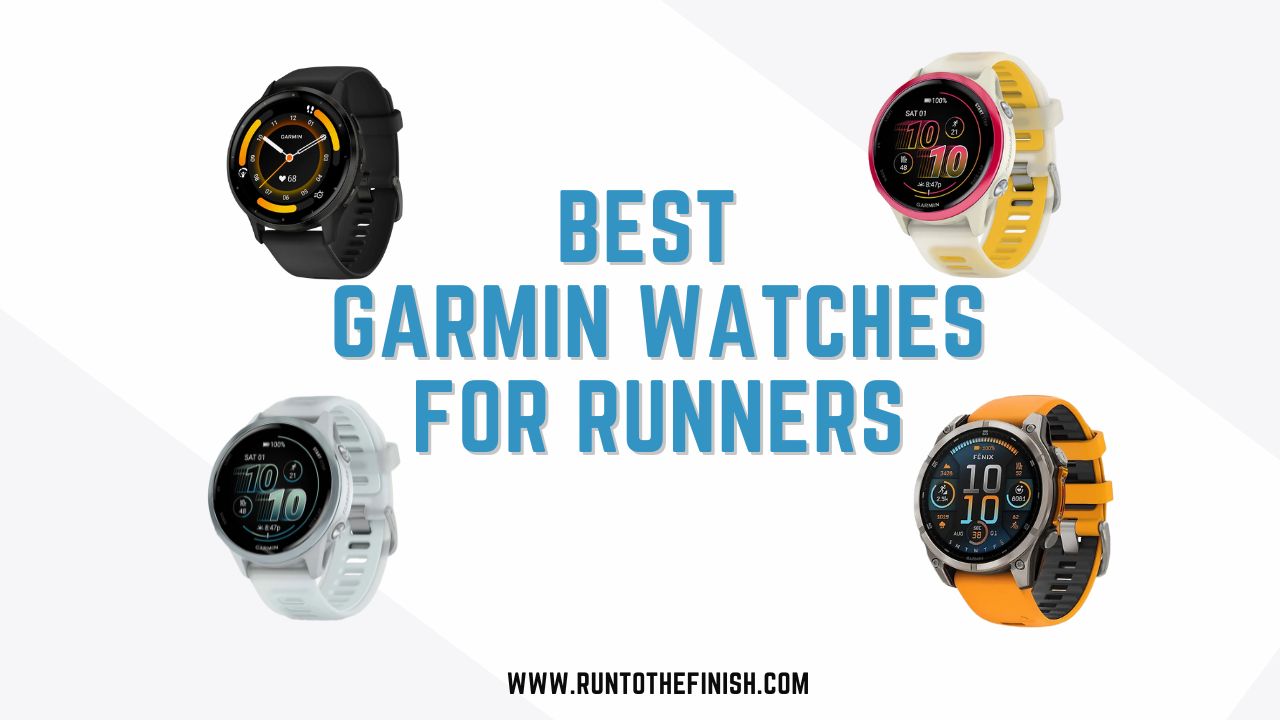
Garmin is a brand that needs no introduction. With their sleek designs, accurate tracking capabilities, and impressive data analysis features, Garmin watches have become the go-to choice for runners of all levels.
But with so many models on the market, how do you know which one to choose?
Well, fear not, fellow runners! As someone who loves putting running gear to the test, I’m here to help.
In this article, I’ll be sharing my top picks for the best Garmin watches for runners, based on factors like GPS accuracy, battery life, and data tracking capabilities.
I’ve been using Garmin watches since 2004 and it’s amazing to see how they’ve progressed, so hopefully I can give you some insights on comparing Garmin watches for running. Whether you’re just starting out or you’re a seasoned pro, there’s an option that’s perfect for you.
So, let’s hit the ground running! Here’s a peak at the most recent Garmin watches I’ve been testing.
Best Garmin Watches for Runners
- Best Garmin for Beginners- Garmin 165
- Most Affordable Garmin – Garmin 55
- Best Overall Garmin Watch for Runners – Garmin 265
- Best Garmin Smartwatch – Garmin Venu 3
- Most Advanced Garmin Watch – Garmin 570
- Best All Around Garmin Watch for All Sports – Garmin Fenix 8
- Best for Experienced Trail Runners – Garmin Enduro 3
- Best Watch for Triathlon – Garmin 970
8 Best Garmin Watches for Runners Breakdown
All right now let’s compare Garmin running watches. These are listed in order from basic entry level to top end, along with some of the features that set each one apart.
✅Best Garmin for Beginners: Garmin 165 ($249)
Really this should say best entry level running watch because that’s what I really mean. It’s a watch that’s going to work for SO MANY people.
In February of 2024, Garmin released the new Forerunner 165 and it is truly a step up from the 55. About $50 more you will now be getting the AMOLED screen that I gush about with the 265…but for $200 less.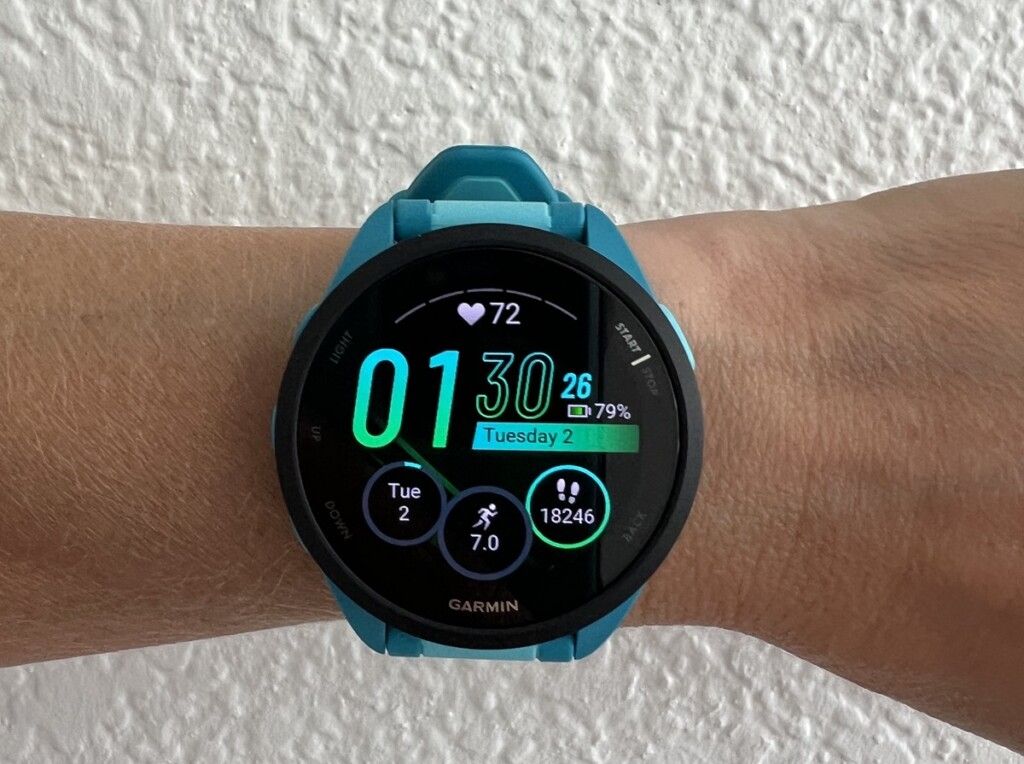
Having started to review this watch recently, I actually think it may be the better option for runners of all levels. The brighter screen alone is worth the extra $49, but there’s so much more than that included.
This watch is going to cover all your bases for health tracking, a huge range of sports AND it includes elevation, ascent and descent which is a feature I sorely missed on the 55.
- Weight: 39 g
- Size: 43 x 43 x 11.6 mm
- Satelite Connection: GPS, GLONASS, GALILEO
- Waterproof Rating: 5 ATM
- Navigation: point to point, breadcrumbs, back to start
- Touchscreen: yes
- Battery: smartwatch 11 days, GPS only 19 hours, Battery save 20 days
- 20+ sport modes available
- Available in 6 colors (certain colors are for music)
- See all the specs of the Garmin 165
Admittedly as a running coach, I’m not the biggest fan of the training suggestions that it provides. But if you want some variety in your workouts then you might get some great ideas from it.
Read my complete Garmin 165 Review >>
✅Most Affordable Garmin – Garmin 55 ($199)
Let’s start with the watch that I recommend 9 times out of 10 for someone who just needs a GPS watch to start better tracking their workouts, the Garmin Forerunner 55.
Understanding the features of this entry level watch, will also help you better understand any upgrades that appear in more advanced watches. Checkout my in-depth review of the Garmin 55 to see all the basics you should expect in your Garmin running watch and what they mean (i.e. what is training status, Live Tracking or treadmill calibration).

The only downside to this watch is that you aren’t getting the top level GPS. So if you take it on the trails or through a lot of buildings it may not be as accurate.
Additionally, you don’t have a built in accelerometer, altimeter or barometer, so you won’t be getting any information about elevation changes. As I mention with the Venu, I do believe that data is helpful.
- Weight: 37 g
- Size: 42 x 42 x 11.6 mm
- Satelite Connection: GPS, GLONASS, GALILEO
- Waterproof Rating: 5 ATM
- Navigation: point to point, breadcrumbs, back to start
- Touchscreen: no
- Battery: smartwatch2 weeks, GPS only 20 hours
- 10+ sport modes available
- Available in 3 colors
- See all the specs of the Garmin 55
**Note it will give you elevation data, but it’s coming from the GPS of the watch. So it is less accurate than the other models with built in altimeter.
Beyond that, you won’t be getting things like race predictor, music control or storage, sleep tracking and some other running data insights.
✅Best Overall Garmin Watch for Runners – Garmin 265 ($449)
After testing this watch, I’m actually ready to start changing my recommendation for a lot of runners from the Forerunner 55 to the 265. This AMOLED display is insane and the watch features really are a step up from the entry level watch.
It’s the watch I am asked most about when sharing photos and the one I’m using about 80% of the time right now. The other 20% is my Garmin Enduro on trail runs. Which means this has finally bumped my long standing Polar Vantage V2 from it’s coveted daily spot. (We’ll see if the HR remains super accurate when winter hits, but so far, right on.)
That being said, if all you need are the basics of HR, how far did I run and some pace data then don’t spend the extra!

All the watches from here have the touchscreen option, which is nice…but can also be a serious pain in the winter. So I appreciate that all of the buttons remain available to make it easy to start, stop, lap, or even adjust settings (including turning off touch screen).
- Weight: 39 g
- Size: 41.7 x 41.7 x 12.9 (mm)
- Satelite Connection: GPS, GLONASS, GALILEO, BeiDou, QZSS
- Waterproof Rating: 5 ATM
- Navigation: point to point, breadcrumbs, back to start
- Touchscreen: no
- Battery: smartwatch 15 days, GPS only 24 hours, GPS with music 7.5 hours
- 40+ sport modes available
- Available in 6 colors
- See all the specs of the Garmin 265
And you’re still getting most of the smartwatch features of the Venu, Garmin pay for contactless payment, and music storage, so it’s a better option if you’re truly looking for training data to help you improve.
✅Best Garmin Smartwatch – Garmin Venu 3 ($449)
Let’s just start with it’s a beautiful watch and the AMOLED touchscreen color display is incredible! I mean look at how vibrant it is in the photo below!
I had no issues with the sleep tracking, steps or even GPS. And while you might think of this as a fitness tracker, I’d say it’s absolutely a step above anything I’ve seen from Fitbit or other brands. It’s missing some run data, but has a lot of other well though out features like the body battery or sleep data, that simply remind a lot of you to recover better.
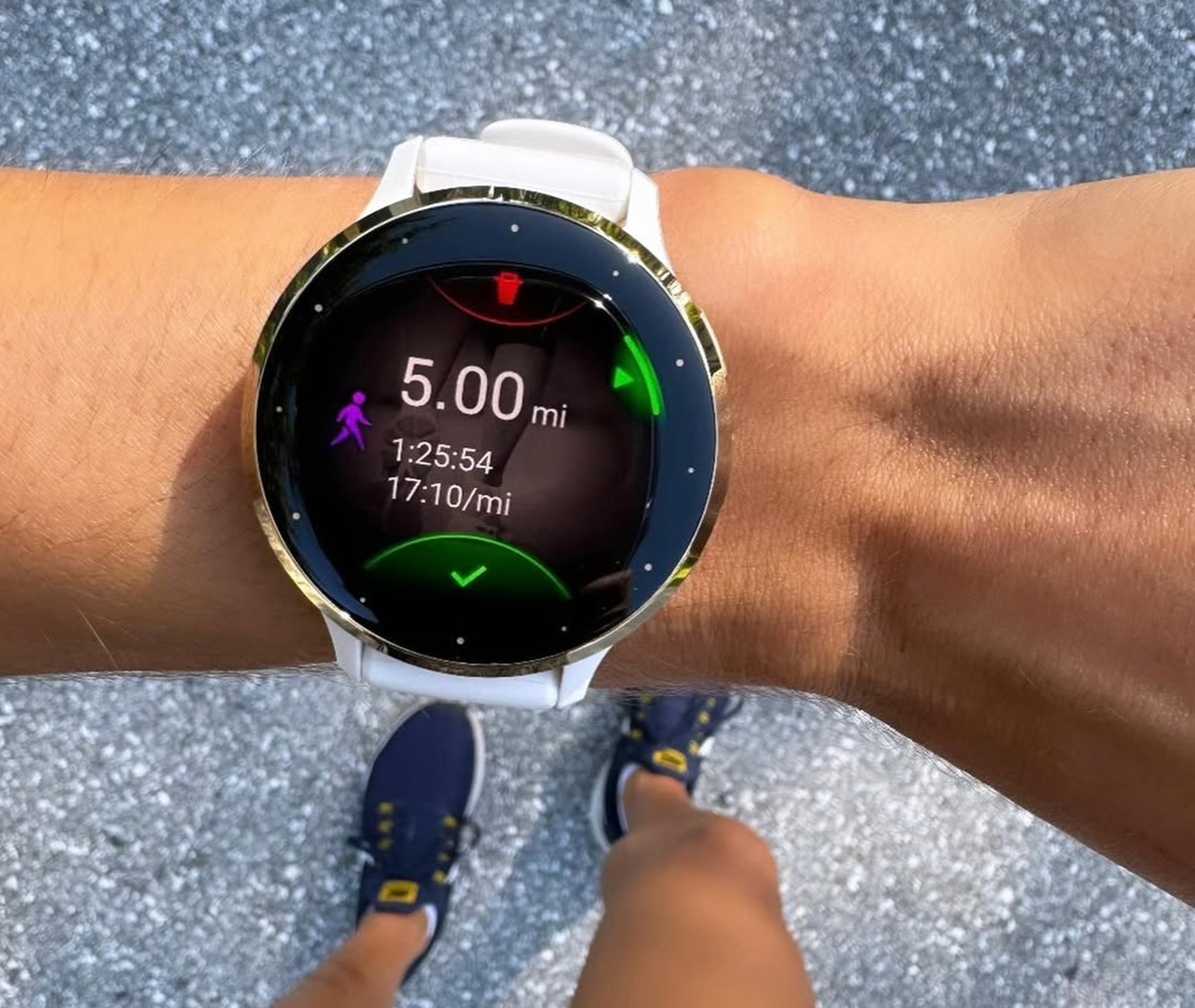
- Weight: 47 g
- Size: 45 x 45 x 12 mm
- Satelite Connection: GPS, GLONASS, GALILEO
- Waterproof Rating: 5 ATM
- Navigation: point to point, breadcrumbs, back to start
- Touchscreen: yes
- Battery: smartwatch 14 days, GPS only 26 hours, Battery save 26 days
- 30+ sport modes available
- Available in 7 colors
- See all the specs of the Venu 3
I would 100% prefer this model over a standard Apple Watch for giving you more accurate HR data, GPS and general information. And with the Venu 3S, you can indeed receive and make phone calls just like from your Apple Watch. Or you can snag the Venu Sq2 which is their only square model of a running watch to give you that Apple look.
✅Most Advanced Garmin Watch – Garmin 570 ($549)
Sure, it’s an advanced watch but what you’re basically getting is a watch that allows you to take phone calls, play golf and track really specific multisport activities.
The Garmin Forerunner 570 is a fantastic watch for athletes who are very active beyond running. Particularly those who golf as it has some very specific features or those who do mountaineering, skiing or team sports.
It’s probably one of the most design-appealing watches that Garmin currently has out there. I’ve been asked a lot about the watch whenever I post about it on Instagram because of it’s unique coloring.

Garmin heard you loud and clear, on the face that a lot of you like your Apple watch is being able to take or answer a phone call. Well now, you can also call them right from your wrist kinda like Inspector Gadget. Of course, like a lot of headphones, if it’s super windy, you’ll want to try to block the microphone for a better quality. And since it’s a small speaker, you aren’t taking a long walk while holding your wrist to your mouth, but it gets the job done.
For it being considered an advanced watch, it’s probably the Garmin watch with the battery life that goes very quickly. You can see from the specs below that it barely lasts 11 hours when used as a smartwatch. Just something to keep in mind!
- Weight: 50 g
- Size: 47 x 47 x 12.9 (mm)
- Satelite Connection: GPS, GLONASS, GALILEO
- Waterproof Rating: 5 ATM
- Navigation: point to point, breadcrumbs, back to start
- Touchscreen: yes
- Battery: smartwatch 11 days, GPS only 18 hours
- 40+ sport modes available
- Available in 6 colors
- See all the specs of the Garmin 570
Read my our full review of the Garmin 570 here >>
✅Best All Around Garmin Watch for All Sports – Garmin Fenix 8 ($799- $1300)
When you want a running watch that looks like a 10 and has the brains of a 10, this is your clear-cut winner. The Fenix can do it all, from running to deep sea diving to skydiving, right alongside giving you phone notifications, pay from your watch, and a decent multi-color display.
The Fenix 8 had a major facelift in terms of brightness and color. The most recent update gave a small boost, so you’ll now find a super bright, colorful watch face, and it has a touchscreen, which is a significant win in our book!
Utilizing all 5 satellite options, GPS, GLONASS, QZSS, BEIDOU, and Galileo, this watch gives you top-notch performance for GPS accuracy, no matter what adventure you’re on.
You’ll see that there are a ton of options for the Fenix depending on what you’re looking for (amoled, microled, solar).

You’ll also be getting all of the expected running features like cadence, stride, vertical oscillation, altitude, elevation gain, pulse oximeter, fueling reminders, race predictor, training suggestions, pace, and VO2 max.
The Fenix also includes maps, which is an incredible feature if you love not just trails, but running in new cities (which I do a lot!)
- Weight: 80g stainless steel, 73g titanium
- Size: 47 x 47 x 13.8 mm
- Satelite Connection: GPS, GLONASS, GALILEO, QZSS, BEIDOU
- Waterproof Rating: 10 ATM
- Navigation: point to point, breadcrumbs, back to start
- Touchscreen: yes
- Battery: smartwatch 16 days, GPS only 47 hours, Battery save 23 days, Max Battery GPS 81 hours, Expedition GPS 17 days
- 40+ sport modes available
- Available in 21 different colors/finishes
- See all the specs of the Fenix options
The Fenix also allows you to pre-load music so that you aren’t streaming from your phone. However, for the majority of runners I still recommend carrying your phone. The emergency alert features actually require the Garmin app to be open on your phone to give people your location.
✅Best for Experienced Trail Runners – Garmin Enduro 3 ($899)
One of the few watches that immediately got my stamp of approval for HR accuracy! It’s a beast of a watch, in terms of size, but I still wear it just about any time I’ll be hitting the trails and for a lot of my road marathon training as well.
Additionally, it became my go to for our mountain hikes, snowshoeing and cross country ski days. Since battery life is one of the things that stands out, let’s look at that.
- Smartwatch up to 36 Days/90 days solar
- Standard GPS mode 120 hours/320 with solar
- Solar charging means that you get extra on all the battery life settings, like up to 320 hours of GPS!
- Expedition mode is designed for multi-day activities to help you get that extended battery life
- Maps for navigation are one of the features that used to set this watch apart, but you can now get even more brilliant colors and maps on the 965.
The Enduro 3 does have a brighter touchscreen, but it’s not the most colorful/brightest of the smartwatches; it still provides all your watch notifications. You can respond to texts from the watch if you have an Android.
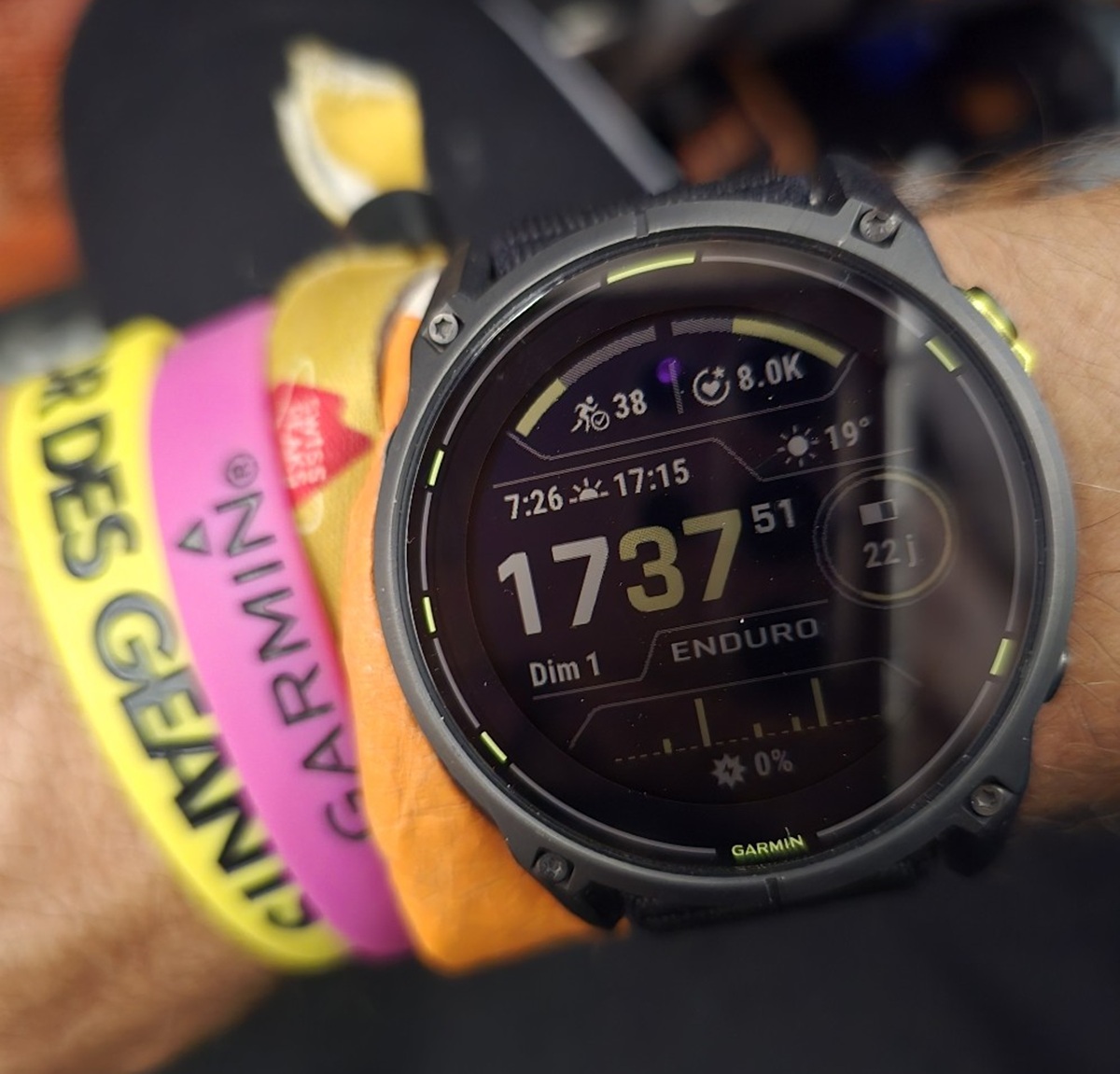
- Weight: 63 g
- Size: 51 x 51 x 15.7 mm
- Satelite Connection: GPS, GLONASS, GALILEO, QZSS, BEIDOU
- Waterproof Rating: 10 ATM
- Navigation: point to point, breadcrumbs, back to start
- Touchscreen: yes
- Battery: smartwatch 36 days/90 days with solar, Battery save 92 days/unlimited w solar, GPS only 120 hours/320 hours w solar, Expedition GPS 77 days/unlimited w solar
- 50+ sport modes available
- Available in 1 color
- See more specs of the Garmin Enduro 3
✅Best Watch for Triathlon – Garmin 970 ($740)
While this is not a triathlon blog and I will not pretend to know all the things you need, I have done my fair share of swimming and biking over the years. I also owned on of the early models of this watch the 935 and it was a stellar watch. So I feel confident speaking to the features and quality for triathletes.
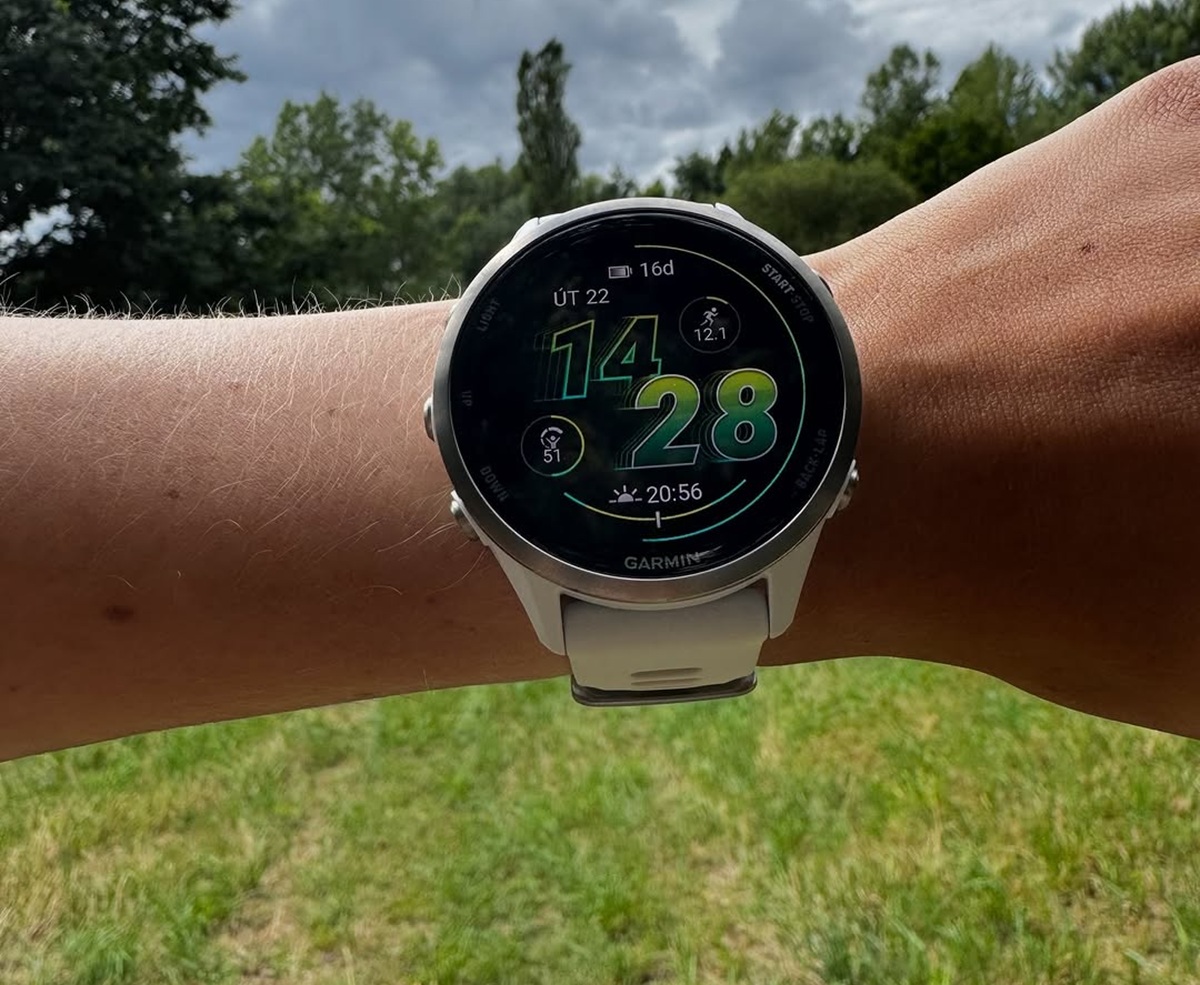
While I have used older models while living and training in Florida (that one time attempted triathlon), I have not put on the newest model. But I couldn’t write up this review and not include it!
- Weight: 65 g
- Size: 47 x 47 x 12.9 (mm)
- Satelite Connection: GPS, GLONASS, GALILEO, QZSS, BEIDOU
- Waterproof Rating: 5 ATM
- Navigation: point to point, breadcrumb trail real time, back to start
- Touchscreen: yes
- Battery: smartwatch 15 days, GPS only 26 hours, GPS only w music 14 hours
- 50+ sport modes available
- Available in 3 color
- See more specs for Garmin 970
Which Garmin Running Watch to Pick?
As you can see from the list above, I have good things to say about pretty much all the Garmin running watches I’ve tested.
In this article, we’ve covered some of the key factors to consider when choosing a Garmin watch for running, including GPS accuracy, battery life, size and weight, display features, data tracking and analysis capabilities, and price range.
By taking these factors into account, you’ll be able to choose a watch that meets your specific needs and helps you achieve your running goals. But I know that’s still easier said than done because the Garmin 55 might do what you need…but oh boy is that Fenix pretty and wow the screen on the 570!!
Here’s a look at the regular size of their watches vs the S models.
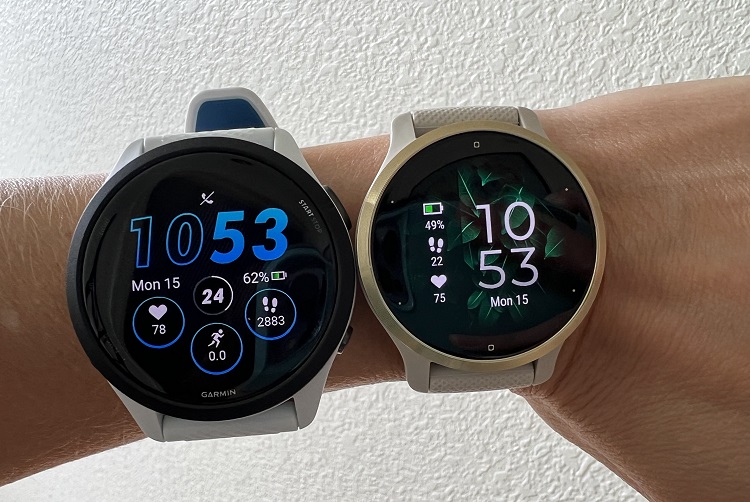
Garmin Running Watch Features to Consider
Garmin is a company that’s been around since 1989 and is well known for its GPS technology. They have a long-standing reputation for producing high-quality, reliable, and durable products.
Garmin’s first foray into the running watch market was the Forerunner 101 in 2003. This watch was a game-changer at the time, as it allowed runners to track their distance, pace, and time without having to use a separate GPS device. (Seriously, I ran for years with just a watch that could tell time, start and stop!!)
Since then, Garmin has continued to innovate and improve upon its running watch designs, releasing new models with increasingly advanced features and technologies.
Today, Garmin offers a wide range of running watches to suit the needs of runners of all levels, from beginners to elite athletes. We’re going to dive in to comparing these below, but first I want to talk a bit more about the features you may need to consider.
They make SO MANY WATCHES now that it can be confusing. Here are the primary features you’re going to want to consider.
GPS Accuracy
In general, all Garmin running watches are going to meet your basic GPS needs. You’ll be getting accurate data on the road and for the majority of your trail runs. However, if you are going to be doing more back-country things or open water swimming, then you may need to step up to the higher level watches like the 970, Fenix and Enduro.
Battery Life
Battery life is another important factor to consider, especially if you’re planning to use your watch for long runs or multi-day events. There is a wide range depending upon the smartwatch features and available GPS modes, going from 20 hours up to several weeks in battery save mode.
Size and Weight
The size and weight of your Garmin watch can also impact your running experience. Look for models that are comfortable to wear and won’t weigh you down during your runs.
More and more Garmin is making most models in their S version, which means small. It fits better on a smaller wrist and I can attest to this when you see me wearing the Enduro next to the Venu 2s.
Display Features
A clear and easy-to-read display is important for tracking your progress during a run. Pretty much all Garmin watches will have high-resolution screens, adjustable brightness levels, and easy-to-navigate menus.
But you may need to decide if you want touch screen or are more focused on long battery life and thus willing to forgo all the pretty colors.
You’ll also find that the Garmin Connect app makes it very easy to customize your screens during workouts on all watches. Additionally some watches will provide additional watch face options there or you can track things like your cycle via the app.
Heart Rate Monitor
All Garmin running watches are going to include the wrist based HR monitor sensors. This is the feature I tend to be the pickiest about as I use it for all of my easy runs.
So far the Enduro has performed the best over the long term. This may have something to do with the larger style and it being more rugged, so in the winter it can continue to get a better reading.
That being said, all the watches also pair with a chest strap via Bluetooth or ANT+ so you can get the gold standard of readings. I also appreciate that they now have 24/7 HR tracking to help you monitor resting HR.
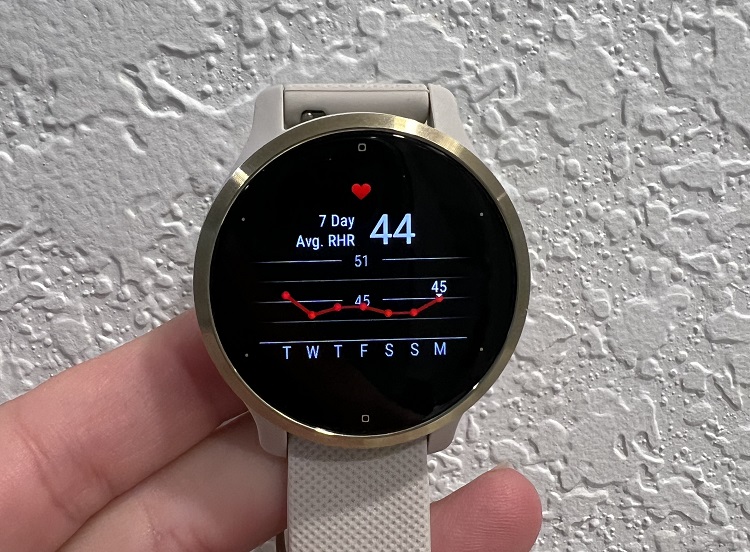
Data Tracking and Analysis Capabilities
Garmin watches come with a variety of data tracking and analysis features, including heart rate monitoring, VO2 max tracking, and custom workout creation. Consider which metrics are most important to you and choose a watch that offers the features you need.
Price Range
Running watches range in price from around $150 to over $1,200. Some of this is due to features, some to do with materials like a screen that’s less likely to break when you drop it off a cliff or can be submerged in water for diving, not just a swim. Consider your budget when choosing a watch, but also keep in mind that a more expensive watch may offer more advanced features and better durability.
What to read next?
- Garmin vs Coros Running Watches
- Running With an Apple Watch: Perfect for Some Runners, Terrible for Others
- Suunto Run Review | More Run Specific Modes to Dial in Training
Other ways to connect with Coach Amanda
Instagram Daily Fun: RunToTheFinish

Facebook Community Chatter: RunToTheFinish
Sign Up to Receive a Weekly Newsletter with Top Running Tips and Laughs



 Nike Structure 26 Review | A Great Redesign, But Waiting on the Plus
Nike Structure 26 Review | A Great Redesign, But Waiting on the Plus
Why is there no mention of Vivoactive 6?
Based on our testing and the price points, we didn’t think it was one of the best options.